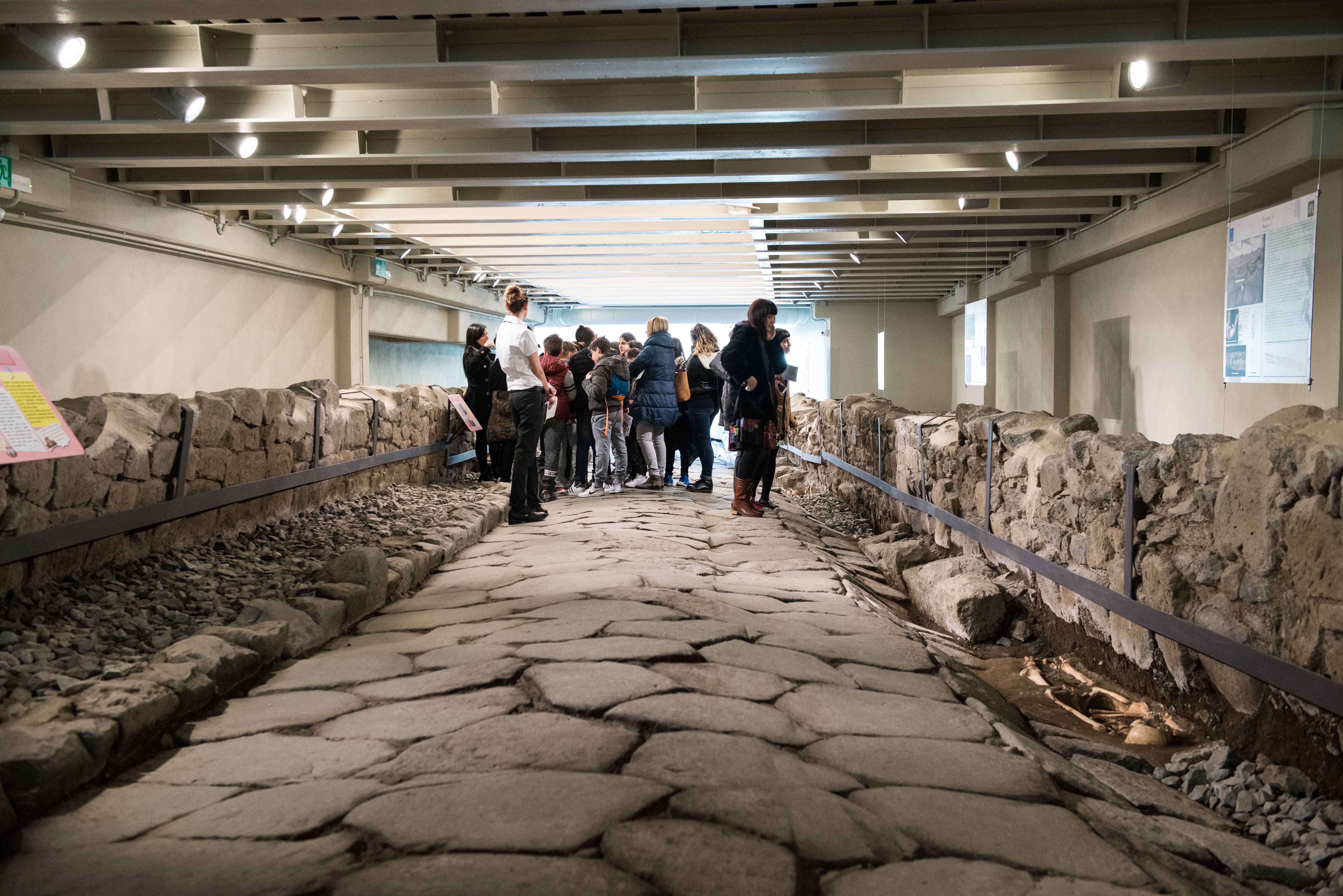On the outskirts of Rome, there is the Colli Albani: a series of towns renowned for their delicious traditional regional cuisine. But we are going to suggest that if you’re passing through Marino, you stop at a McDonald’s – because underneath it, you can explore an ancient Roman road and see the burial place of three Romans.
The road is a diverticulum, a road off the famous Via Appia. The Appian Way was one of the oldest and most important roads ever built during the Roman Republic. It connected Rome to the southern city of Brindisi, extending for 195 kilometers (132 miles) and a modern version of the road continues to exist and be used today. It is possible to walk most of the old road, too. A lot of this ancient road and the smaller roads that spread from it fell into disuse during the later years of the empire, and this is the fate of this part of the road.
The road and one of the skeletons located underneath the restaurant. Image Credit: McDonald’s shared with permission.
At some point between the second and third century CE, this portion of the road stopped being used. It began to be covered, first in soil and then in vegetation. It is only then that the location is used as a burial site – on that portion of the road, extending for 45 meters (147.6 feet) under the restaurant, there are three burials. The burials were on the ancient drainage canal, next to a wall that remains upright today. We know that Roman cement is extremely durable, potentially having self-healing properties.
The three people buried appeared to have been male, possibly buried in coffins or shrouds. However, nothing including personal effects remain, only their skeletons. From those, archeologists have determined that the older person was between 35 and 45 and had lost a few molars during his life, maybe due to age, illness, or just malnutrition. He had a fracture on his right leg that led to a bigger femur, which might have led him to have difficulties moving. He worked strenuously throughout his life, as his vertebrae suggest.
The other two tombs belonged to much younger people, both teenagers. There is no evidence of illnesses from the skeletons, only some malnutrition and cavities. For all three, it is not clear what the cause of death was.
The whole area was discovered in 2014, as workers began to build the restaurant. This is not the only portion of this road that has survived, other stretches of the road exist. Unfortunately, areas immediately to the west and east no longer do. They were excavated and destroyed long before, to build the modern Appian road on one side and a warehouse (that no longer exists) on the other. At least this area has been preserved.
Who knows what the Romans might make of having a whole fast-food restaurant above one of their roads? They did love their service stations. Just further along the way, there was a place known as Tres Tabernae – three shops – where there was a general store, a blacksmith, and a refreshment house along connections to three important roads connecting to the Appian way.
Source Link: This Italian McDonald’s Has Something Unique Inside – A Roman Road And Three Skeletons
